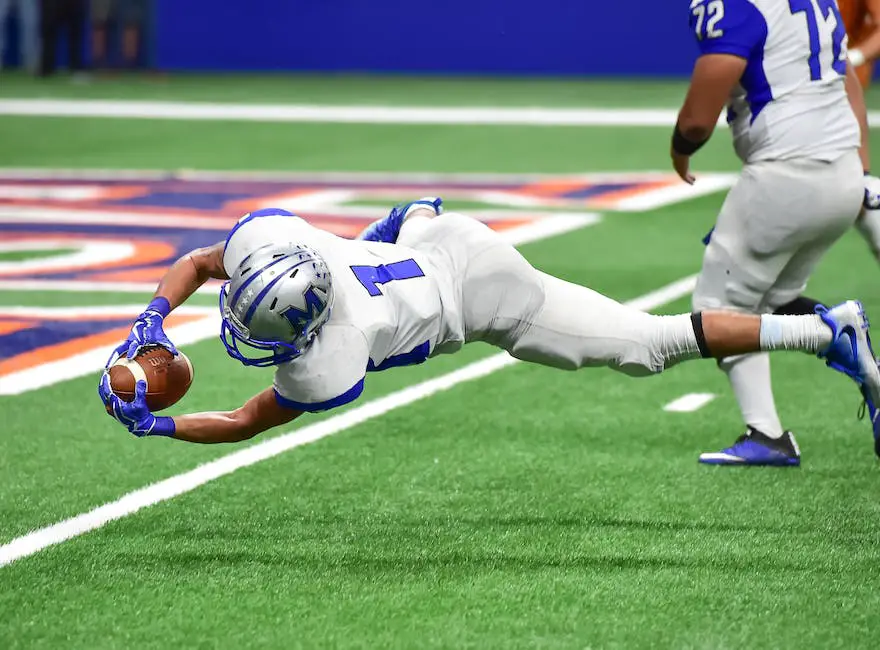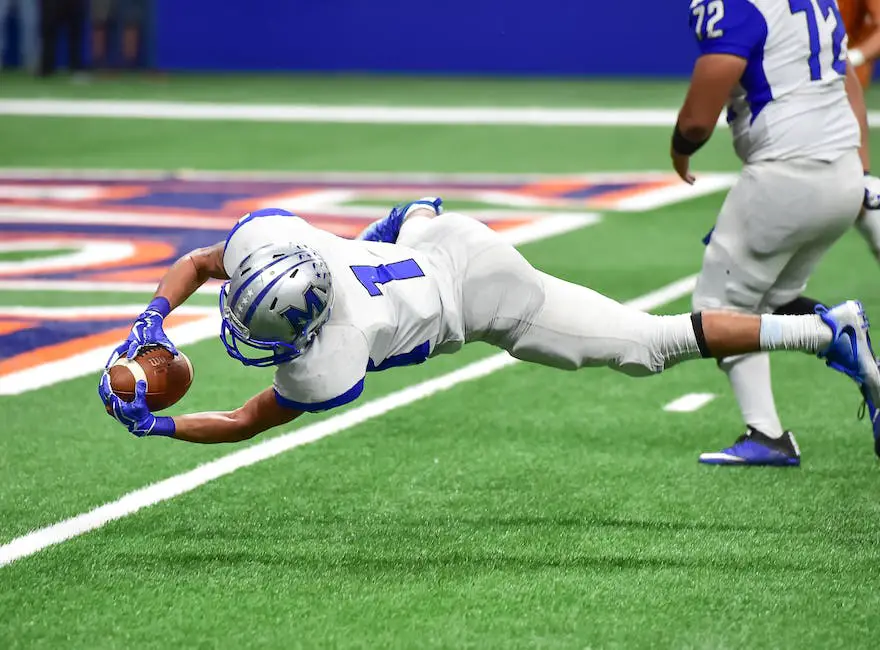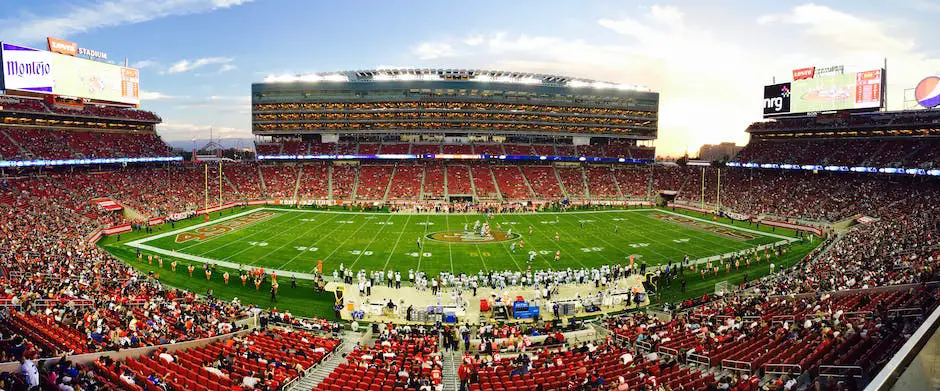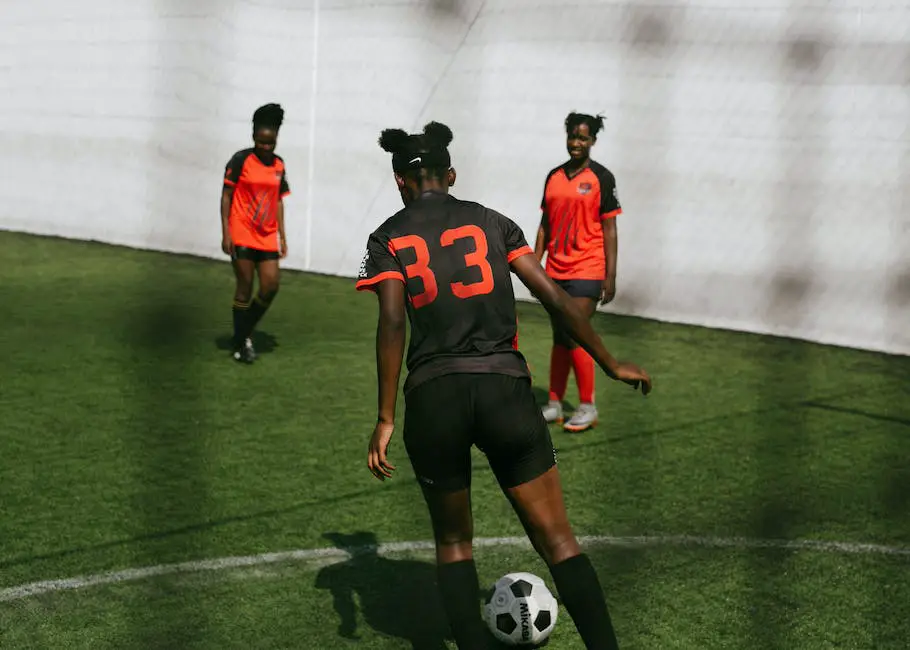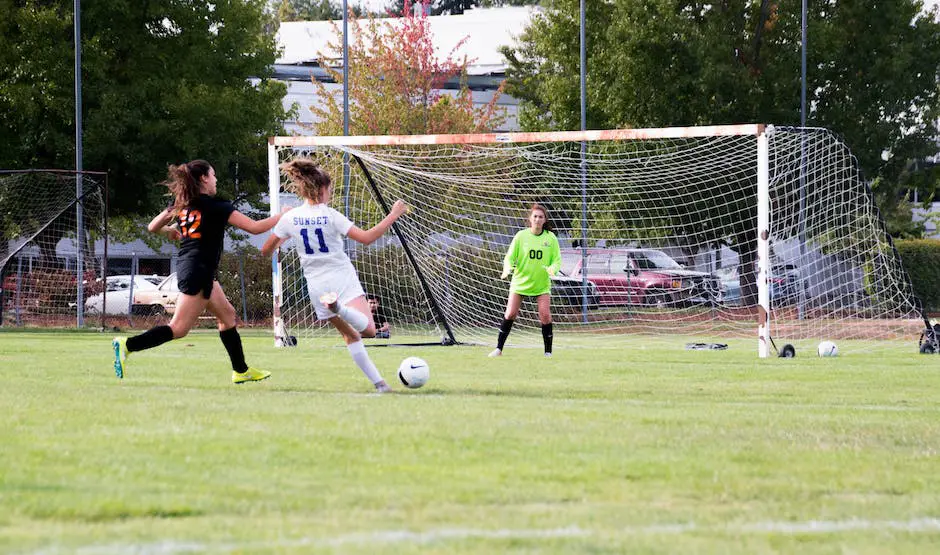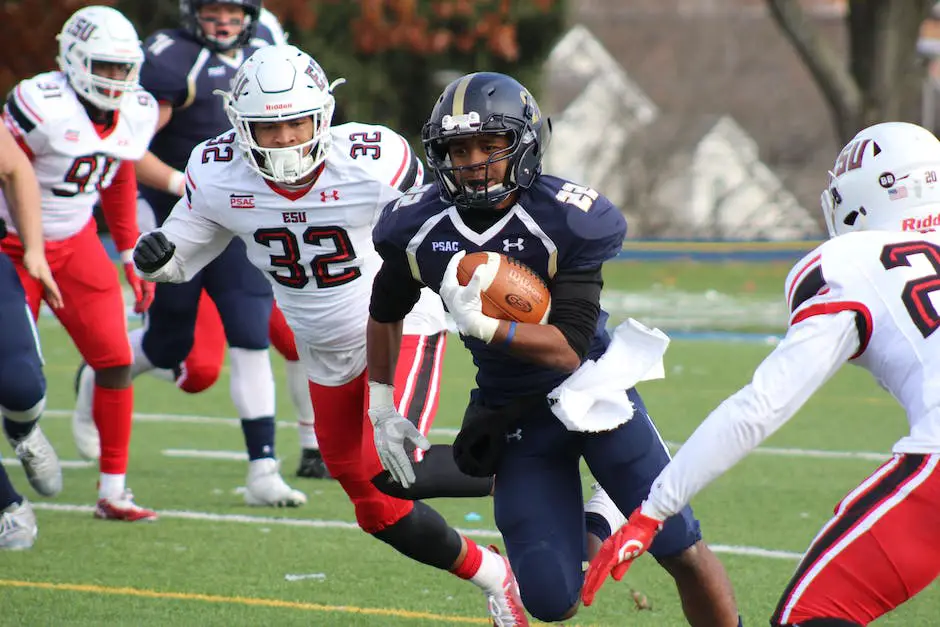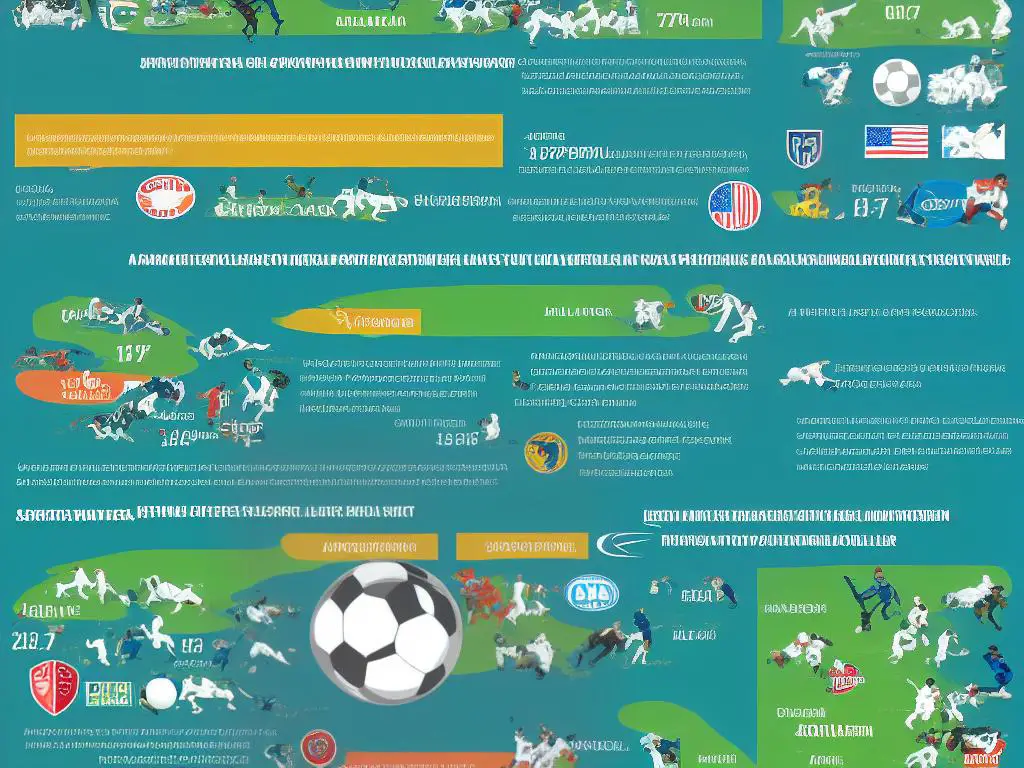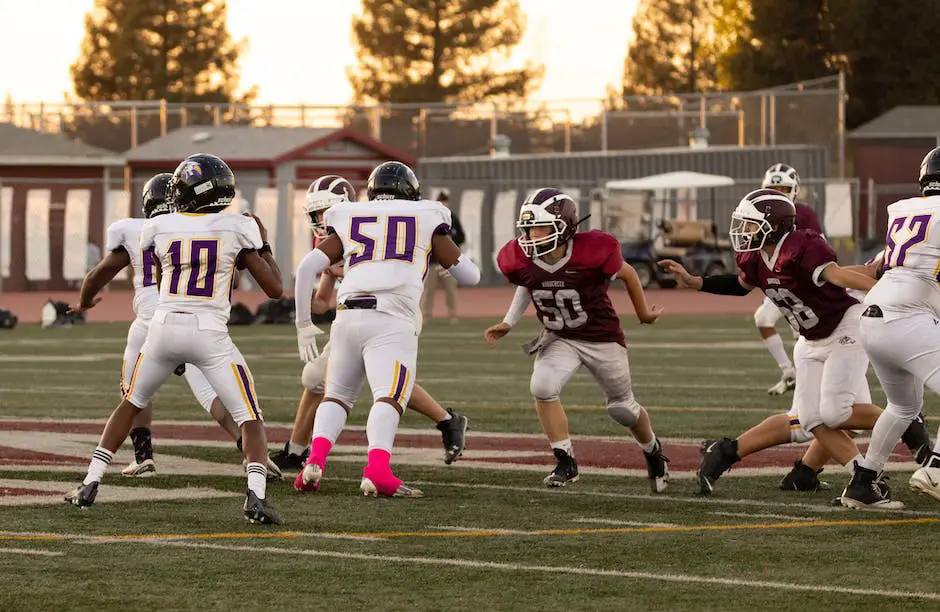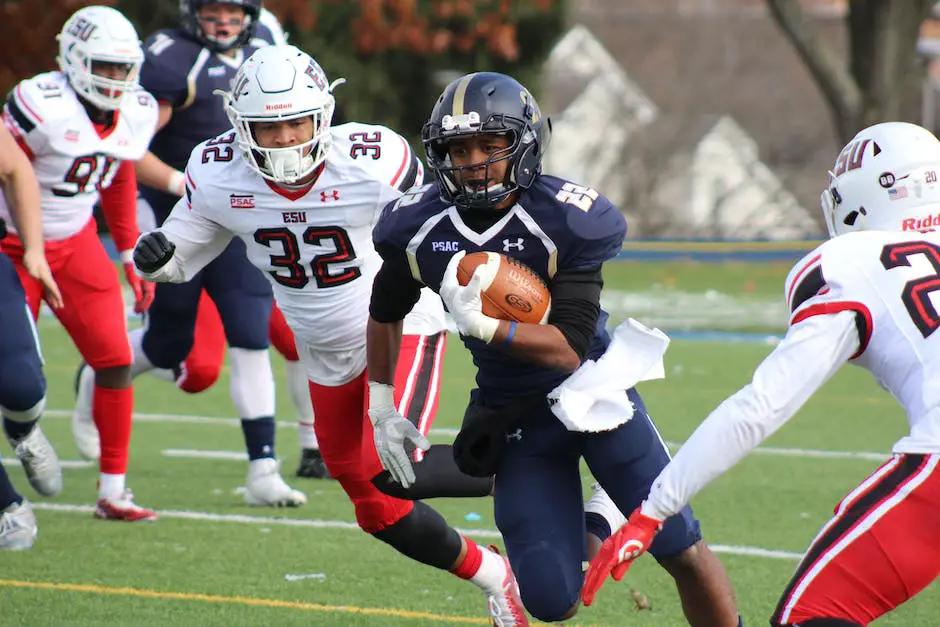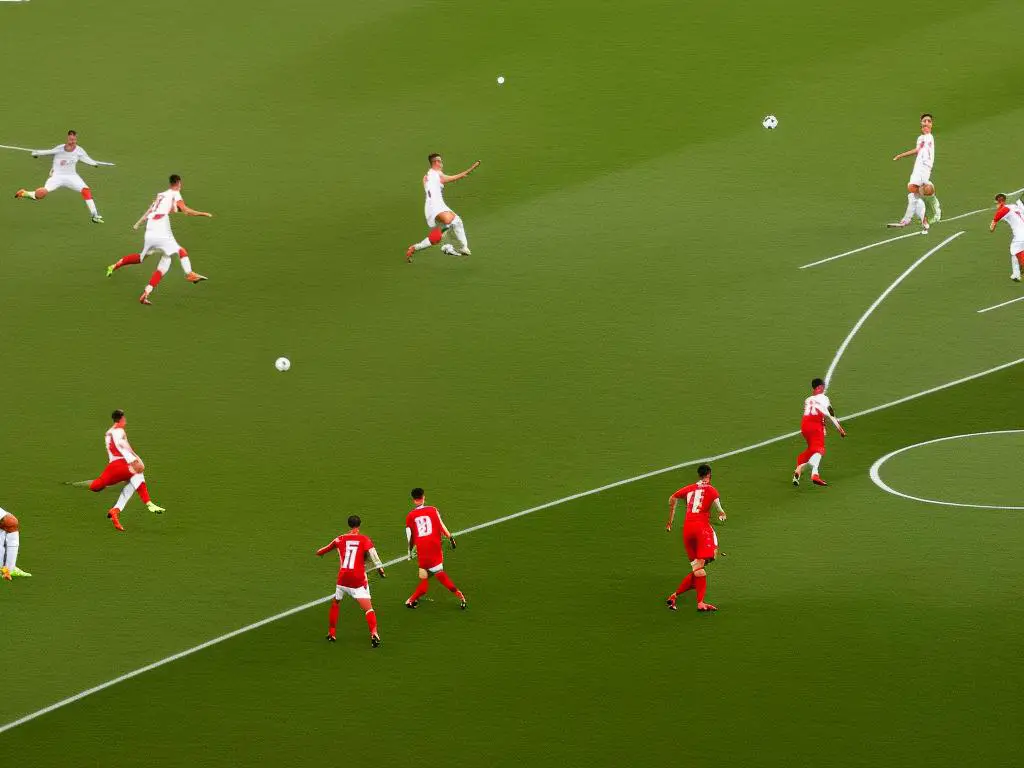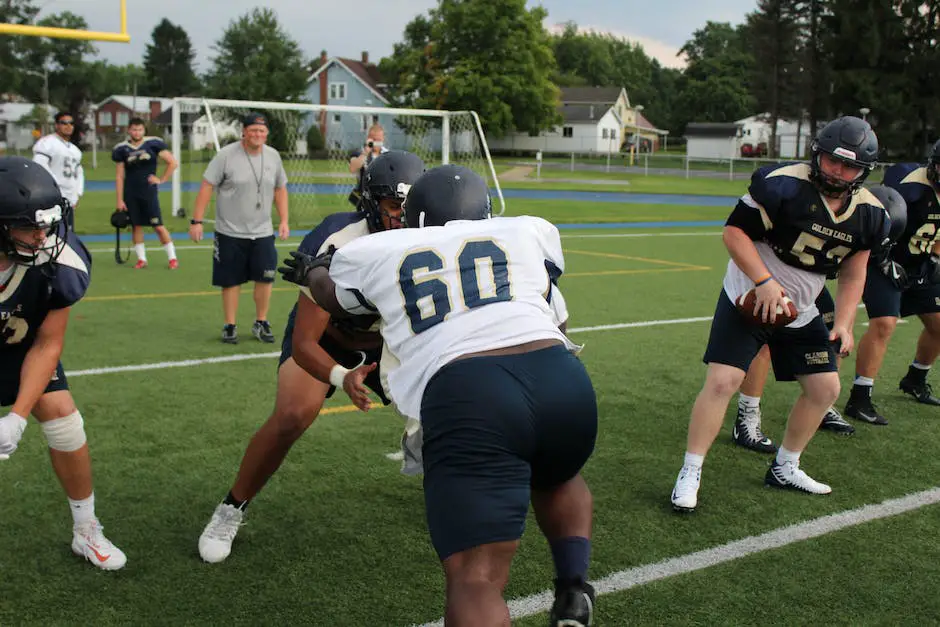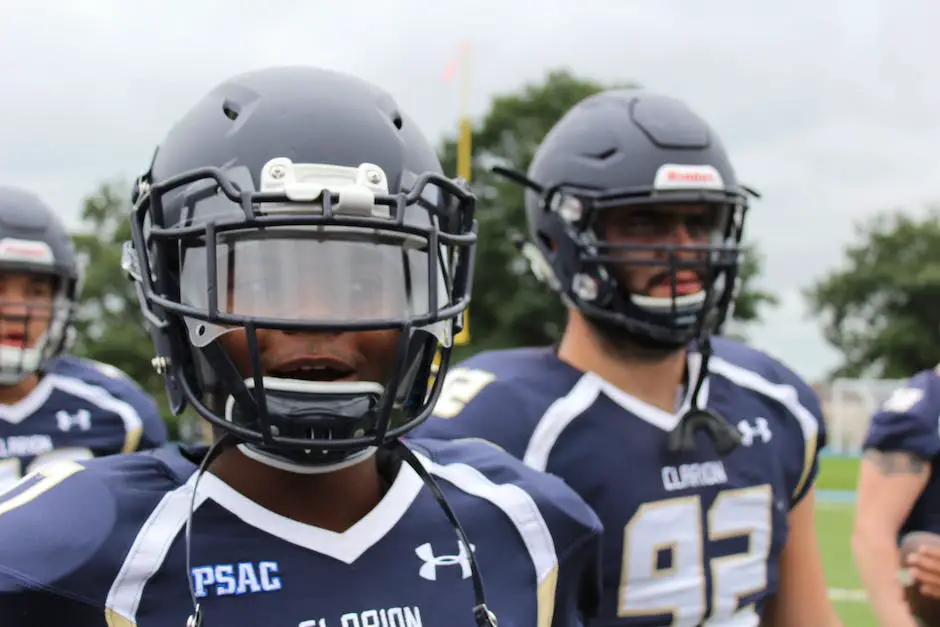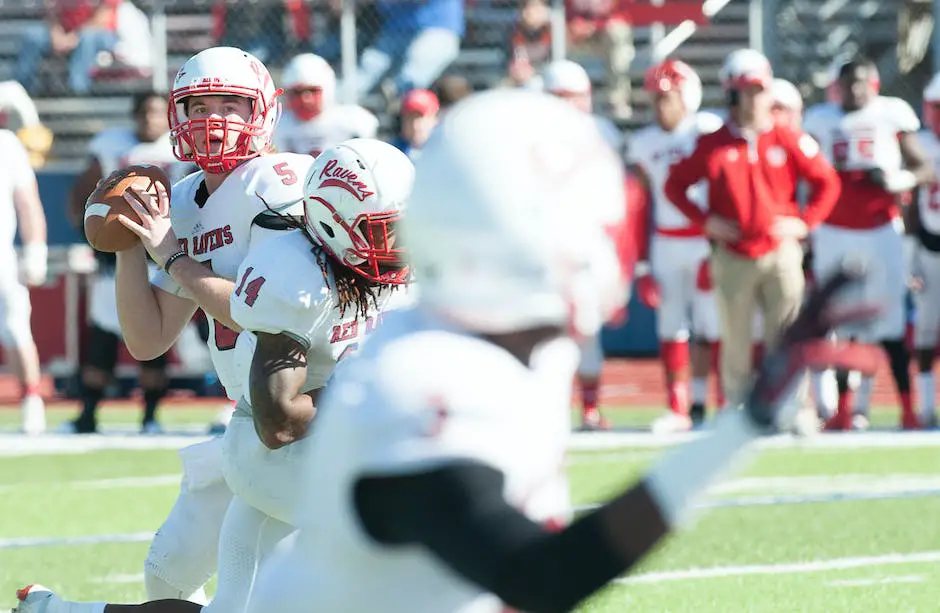Football, a captivating and exhilarating sport, has captured the hearts and minds of millions of people across the globe for well over a century. A remarkable fusion of speed, power, strategy, and teamwork, football has evolved from humble origins into a complex athletic endeavor that brings people together from all walks of life. This essay encompasses the fascinating journey of football, the essential rules and regulations that govern its play, the various leagues and teams that entertain fans worldwide, the famous personalities that have shaped the sport, and the strategic nuances that make football an ever-evolving battle on the field. Additionally, the essay delves into the safety aspects and injury risks associated with football, as well as the cultural and economic effects of this immensely popular sport.
History of Football
The History of Football
The modern game of football can trace its origins back to England in the 19th century, where many different variations of the sport were played. In 1863, the Football Association (FA) was formed in England, leading to the establishment of standardized rules and regulations for the sport. The FA Cup, the oldest football competition in the world, was established in 1871 and allowed teams from across the country to compete against one another. As the popularity of the sport continued to grow, professional leagues began to take shape – with the English Football League established in 1888, and the first international games taking place in the 1870s, marking the beginning of modern football as we know it.
The early 20th century saw the formation of various leagues not only in the United Kingdom, but also in other parts of the world. In the United States, the American Professional Football Association (APFA) was formed in 1920, which would later become the National Football League (NFL), while the first professional league in Germany was established as early as 1903. The sport’s popularity continued to surge; in 1930, the inaugural FIFA World Cup took place in Uruguay, which had emerged as an international powerhouse in football. Today, the competition is considered one of the most prestigious events in the world of sports, attracting billions of viewers from all corners of the globe.
Significant Rule Changes
Throughout the history of football, significant rule changes have been implemented to ensure the sport remains both competitive and entertaining. In 1912, the dimensions of the goalposts were standardized, and in the 1930s, the concept of a penalty area was introduced, resulting in the penalty kick. Additionally, the offside rule has seen numerous changes over the years, with the most recent modification in 2005. These changes have kept the game dynamic and have influenced the tactics and strategies employed by teams across different eras.
Memorable World Cup Moments
As the sport has evolved, so too has the way it is played at the highest level. The World Cup has featured some of the most memorable moments and matches, including the “Miracle of Bern” in 1954, when West Germany defied expectations and defeated the heavily favored Hungarian team in the final. The iconic “Hand of God” goal by Argentine legend Diego Maradona in the 1986 World Cup quarterfinal against England has also become a mainstay in football folklore. The World Cup has served as a platform for the rise of numerous football stars, such as Pelé, Maradona, Zinedine Zidane, and Lionel Messi, who have all left an indelible mark on the sport.
Club Competitions and the Future of Football
Apart from the World Cup, numerous club competitions have become prominent events in the world of football. The UEFA Champions League, which showcases the top teams from European domestic leagues, is one of the most esteemed and followed club competitions globally. Similarly, the Copa Libertadores represents the finest teams in South America. As football has expanded, major investments have flowed into top club teams, resulting in a multi-billion-dollar worldwide industry. The ongoing improvement and technological breakthroughs in analytics and sports science have significantly influenced the modern game, enabling teams to refine their tactics and maintain peak physical performance. With football’s popularity showing no signs of diminishing, the sport’s long and storied history is sure to continue far into the future.
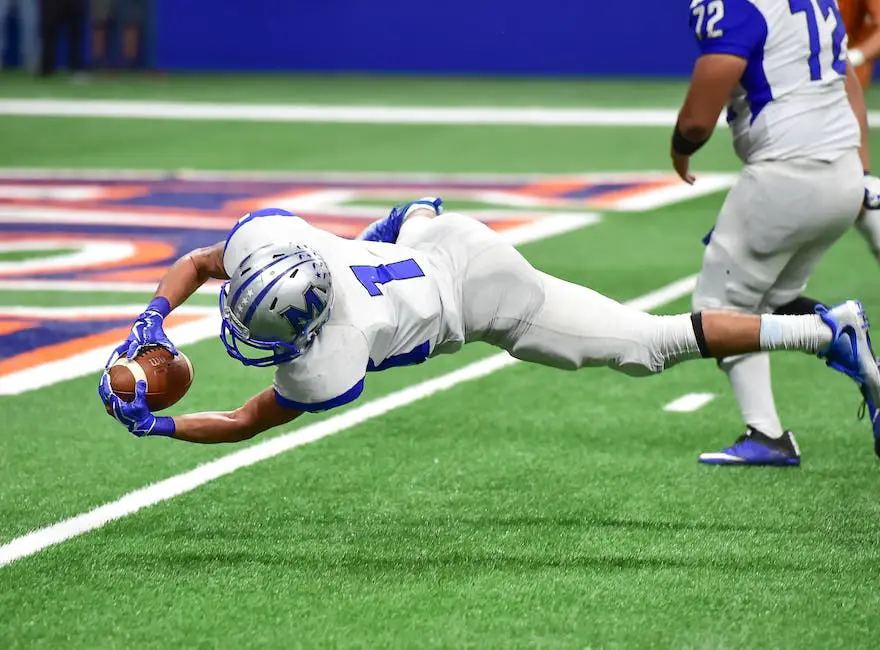
Football Rules and Regulations
Scoring in Football
Scoring is a fundamental aspect of football. Teams earn points by advancing the football into the opposing team’s end zone, either by running with the ball or completing a pass to a teammate. Touchdowns reward six points, and after achieving a touchdown, a team can choose to attempt an extra point (or PAT) by kicking the ball through the uprights and earning an extra point. Or, they can try a two-point conversion by running or passing the ball into the end zone from the two-yard line, securing two points. Teams can also accumulate points through field goals which involve kicking the ball through the uprights during general play, earning three points.
Standard Football Game
In a standard football game, there are four 15-minute quarters, with a 12-minute halftime break. The game begins with a coin toss, where the winner can elect to kick off the ball or receive the kick. The game clock stops after every incomplete pass, or when a player goes out of bounds with the ball. In the event of a tie at the end of regulation play, there is an additional 15-minute sudden-death overtime period where the first team to score wins the game.
Penalties in Football
Penalties are an integral part of the game, as referees have the authority to enforce various rules and regulations. Some common penalties include holding (grabbing a player who does not have the ball), pass interference (blocking or making contact with a receiver before the ball arrives), and false starts (a player moving before the snap). Penalties often result in yardage lost and/or replaying the down, depending on the severity and nature of the infraction.
Positions in Football
Understanding the positions in football is essential for grasping the game’s strategy. There are three main units: offense, defense, and special teams. The offensive unit’s goal is to move the ball downfield and score points, consisting of the quarterback (who passes or hands off the ball), running backs (who run with the ball), wide receivers (who catch passes), and linemen (who protect the quarterback and create running lanes). The defense’s objective is to stop the offense from scoring and regain possession, composed of linemen (who rush the quarterback and stop the running game), linebackers (who tackle offensive players and defend against short passes), and defensive backs (who cover receivers and intercept passes). Special teams are responsible for kicking and punting the ball, including kickoffs, punts, field goals, and extra points.
Introduction to Football
Football is a popular sport in the United States, played on a 120-yard long field, including two 10-yard deep end zones, and 53.3 yards wide. The field is marked with yard lines every 5 yards, which help referees determine field position and penalties. Hash marks separate the field into halves and allow for accurate spotting of the ball after each play. There are goalposts at the back of each end zone, which are the targets for both extra point and field goal attempts. Understanding the layout of the field, along with the positional responsibilities and basic rules, is vital in grasping the complexities of football.

Popular Leagues and Teams
The National Football League (NFL)
As you become familiar with the field and rules of football, it’s essential to know about the most popular professional football league in the United States: The National Football League (NFL). The NFL consists of 32 teams divided into two conferences, the American Football Conference (AFC) and the National Football Conference (NFC).
Iconic teams within the league, such as the Dallas Cowboys, New England Patriots, Green Bay Packers, and Pittsburgh Steelers, have amassed dedicated fan bases and made history through their accomplishments. Notable moments include the Packers winning the first Super Bowl and the Steelers securing the most championships with six titles.
Intense rivalries, including those between the Green Bay Packers and the Chicago Bears, and the Dallas Cowboys and the Washington Football Team, add to the excitement and competitiveness within the league, making NFL games even more engaging for spectators.
NCAA College Football
Another league with a massive following and strong historical legacy is the NCAA college football in the United States. This league comprises hundreds of teams from universities and colleges, organized into divisions and conferences.
Powerhouse programs such as Alabama, Clemson, Ohio State, and Notre Dame regularly compete in high-stakes games and bowl championships.
College football rivalries can be just as intense, if not more so, than those in the NFL, with iconic matchups such as the Alabama Crimson Tide versus the Auburn Tigers in the Iron Bowl, or the Michigan Wolverines against the Ohio State Buckeyes.
International Football Leagues
Outside of the United States, football, also known as soccer, dominates international sports culture and is home to several prestigious leagues.
English Premier League
One such league is the English Premier League, which is regarded by many as the most competitive soccer league in the world.
Established clubs such as Manchester United, Liverpool, Arsenal, and Chelsea have huge fan followings, impressive historical records, and engaging rivalries.
The North-West derby between Manchester United and Liverpool is one of the most heated and closely watched soccer duels on the planet.
Spain’s La Liga
Similarly, Spain’s La Liga has enjoyed global recognition for its display of exceptional talent and fierce competition.
It is home to legendary clubs such as FC Barcelona and Real Madrid, which have both produced some of the most iconic players in the sport’s history.
The rivalry between these two teams, known as El Clásico, is a highly anticipated event that garners the attention of millions of viewers worldwide.
European Leagues
Other notable European leagues include the German Bundesliga, home to clubs such as Bayern Munich and Borussia Dortmund, and Italy’s Serie A, featuring Juventus, AC Milan, and Inter Milan.
South America Football Leagues
In South America, Brazil’s Campeonato Brasileiro Série A and Argentina’s Primera División feature prominent clubs like Flamengo, Palmeiras, Boca Juniors, and River Plate.
These leagues have cultivated many talented players who have gone on to make a significant impact on the international stage.
The Superclásico, a match between Boca Juniors and River Plate, is considered one of the most intense and passionate rivalries in the sport of football.
Introduction to Football
Football leagues around the world provide fans with endless entertainment through competitive matches, historic teams, and unparalleled rivalries that continuously shape the dynamics and excitement of the beautiful game. From the NFL in the United States to international football clubs, this sport boasts numerous talented players and iconic figures who have left a lasting impact on the sport.
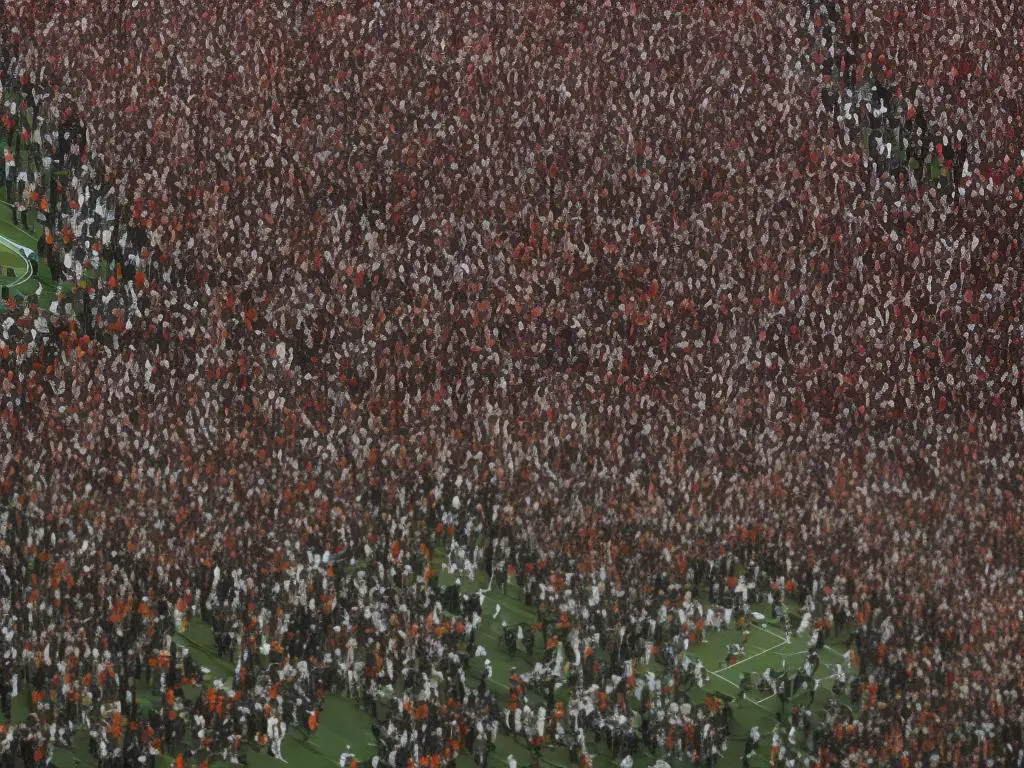
Famous Football Players and Coaches
Football Icons
One of the most famous football players in history, Joe Montana, played as a quarterback in the NFL for 16 seasons. Nicknamed ‘Joe Cool’ and ‘The Comeback Kid,’ he spent the majority of his career with the San Francisco 49ers, leading the team to four Super Bowl championships. Montana’s precision and ability to perform under pressure earned him the reputation as one of the greatest clutch performers in sports. Off the field, he has also found success. Montana is an investor and philanthropist, with a focus on youth sports and education charities.
Another iconic football player is Jerry Rice, a wide receiver who is considered one of the greatest of all time. Over a 20-year career in the NFL, Rice played for the San Francisco 49ers, Oakland Raiders, and Seattle Seahawks. Rice holds numerous records, including most career receptions, receiving yards, and total touchdowns. He is a 3-time Super Bowl champion and was inducted into the Pro Football Hall of Fame in 2010. Off the field, Rice has competed on reality television shows, making it to the finals of Dancing with the Stars, and contributes to charity work through the Jerry Rice 127 Foundation.
Famous Coaches
Some of the most well-known figures in football are the coaches who have left a lasting impact on the sport. One such individual is Vince Lombardi, the legendary head coach of the Green Bay Packers during the 1960s. Lombardi led the Packers to three consecutive league championships and two Super Bowl titles, emphasizing discipline and motivation in his coaching style. As a testament to his influence, the Super Bowl trophy now bears his name. Lombardi’s philosophies on leadership and team-building resonate beyond football, inspiring organizations of all kinds.
Another highly respected football coach is Bill Belichick, the New England Patriots’ head coach since 2000. Widely considered one of the greatest NFL coaches of all time, Belichick has guided the Patriots to nine Super Bowl appearances, winning six championships. Known for his adaptive and meticulous coaching, Belichick’s game plans focus on exploiting opponents’ weaknesses and maximizing his players’ strengths. Besides his achievements on the field, Belichick also runs the Bill Belichick Foundation, supporting athletic programs and sports organizations in need.
Tom Landry, the first head coach of the Dallas Cowboys, is also a significant figure in football coaching history. Over a 29-year tenure, Landry’s leadership saw the Cowboys compete in five Super Bowls, securing two championships. His innovative coaching techniques, such as using computer analysis for player evaluation and strategy development, have left a lasting legacy. Today, the Coach of the Year award is named after Landry, who, outside of football, was a devoted family man and active in his faith.
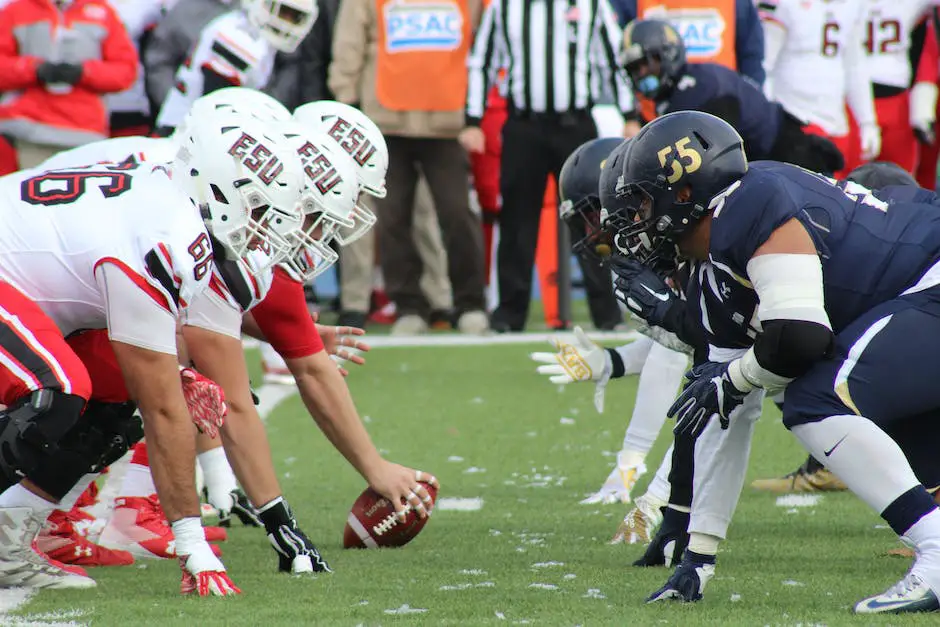
Football Strategies and Techniques
Offensive Strategies
In order to succeed on the field, football teams must employ effective offensive strategies. One core strategy is developing a strong running game. By combining power and speed in their running backs, teams can control the game’s tempo and create opportunities for the passing game. The offensive line plays a critical role in blocking for running backs, creating gaps and facilitating zone-blocking schemes to stretch the defense and open up running lanes.
The passing game, on the other hand, is essential for quickly advancing the ball downfield. Expertly led by the quarterback, the passing game relies on reading the opposing defense and making accurate throws. Integrating various passing concepts like play-action passes, which are built upon a successful running game, helps to deceive the defense and create openings for receivers downfield.
Moreover, offensive passing schemes can be categorized by their specific approaches. Examples include the West Coast Offense, which prioritizes short, quick throws, and the Air Raid offense, which emphasizes deep throws to stretch the defense vertically. By utilizing a combination of running and passing strategies, football teams can effectively move the ball and increase their chances of scoring.
Defensive Strategies:
Defensive strategies in football are designed to counteract an opponent’s offensive tactics. One primary goal of a defense is to stop the running game and force the offense into passing situations.
To achieve this, defenses typically use formations such as the 4-3 (four down linemen, three linebackers) or the 3-4 (three down linemen, four linebackers) to stack the line of scrimmage and clog running gaps.
However, stopping the run is not the only responsibility of a defense. Generating pressure on the quarterback is another crucial element that defensive coordinators focus on. By generating a pass rush, defensive linemen can disrupt a quarterback’s timing, leading to sacks, hurried throws, or even turnovers.
In the secondary, defensive backs play a vital role in defending against the passing game. They are responsible for covering wide receivers and preventing them from catching passes. Various coverage schemes, such as man-to-man coverage and zone coverage, are used to defend against different types of passing offenses.
Man-to-man coverage assigns each defensive back to cover a specific receiver, while in zone coverage, defensive backs are responsible for covering particular areas of the field.
Strategies like the Cover 2 and the Tampa 2 defense utilize a mix of both man and zone principles to confuse offenses and force turnovers.
Special Teams:
Special teams are often an overlooked, yet essential aspect of football. Coaches must decide whether to use a traditional punt or a rugby-style punt when trying to pin an opposing team deep in their territory. Additionally, teams may use trick plays, such as fake field goals or surprise onside kicks, to catch opponents off guard and regain possession.
In-field elements such as weather and game situations can also dictate a coach’s decision-making in regards to special teams. Having a solid special teams unit can improve a team’s field position battles, ultimately leading to an increase in offensive and defensive success.
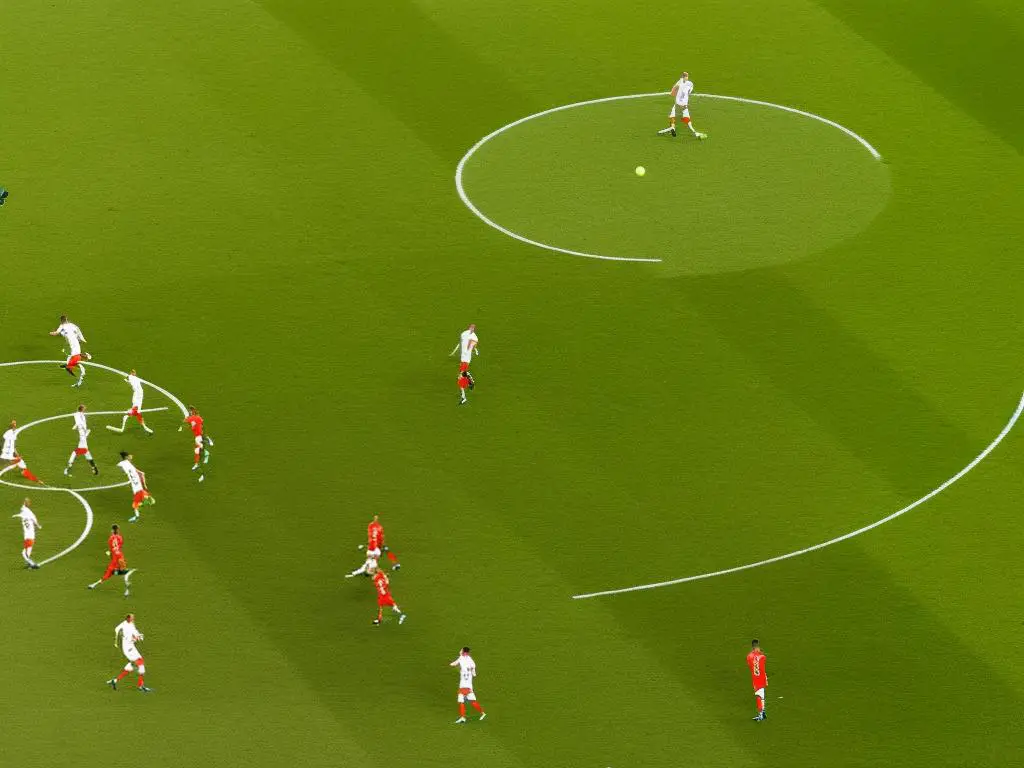
Football Safety and Injuries
Football Safety
As an important aspect of the game, football safety focuses on the type and quality of equipment used by players. Helmets, shoulder pads, and mouthguards play a crucial role in preventing head and neck injuries during collisions on the field. Manufacturers continuously refine helmet designs, using advanced materials and technology to absorb impact and reduce the risk of concussions and traumatic brain injuries. Additionally, rules and regulations have been implemented to govern tackling techniques, with the aim of minimizing high-impact hits and the risk of concussions.
Common Injuries
Despite the advances in protective equipment and rule changes, injuries still occur in football. Some of the most common injuries include sprains, strains, and fractures, which can affect muscles, ligaments, and bones. One of the most prevalent types of injuries in football involves the knee. The anterior cruciate ligament, or ACL, is often damaged during rapid changes in direction or when an athlete lands awkwardly after jumping for a ball. Other common knee injuries include medial collateral ligament (MCL) and meniscal tears.
Injury Prevention
Proper conditioning and training are essential for injury prevention in football. A well-rounded training program emphasizes flexibility, strength, and endurance to ensure that players can meet the physical demands of the sport. In addition to targeted strength and conditioning exercises, athletes should focus on maintaining a strong core and proper biomechanics during play to minimize the risk of injury. Correctly executed warm-up and cool-down exercises before and after practices and games can also help to prevent muscle strains and ligament injuries.
Concussion Awareness
Concussions have become a significant concern within the football community due to their potential long-term complications. Research has shown that repeated head trauma can lead to a degenerative brain disease called chronic traumatic encephalopathy (CTE). To address this issue, coaches and athletic trainers have been educated on recognizing the symptoms of concussions, and new protocols have been developed for managing concussed athletes. If a player is suspected of having a concussion, they are immediately removed from play and treated by a medical professional to ensure a safe recovery.
Efforts to Minimize Injury Risks
Football is a physically demanding sport, but ongoing efforts are being made to minimize injury risks for players. Rule changes, improved equipment, and proper coaching techniques can all contribute to a safer playing environment for athletes at all levels. Furthermore, a culture of safety and awareness helps players actively participate in their own protection by communicating with teammates, coaches, and medical staff about injuries or concerns.
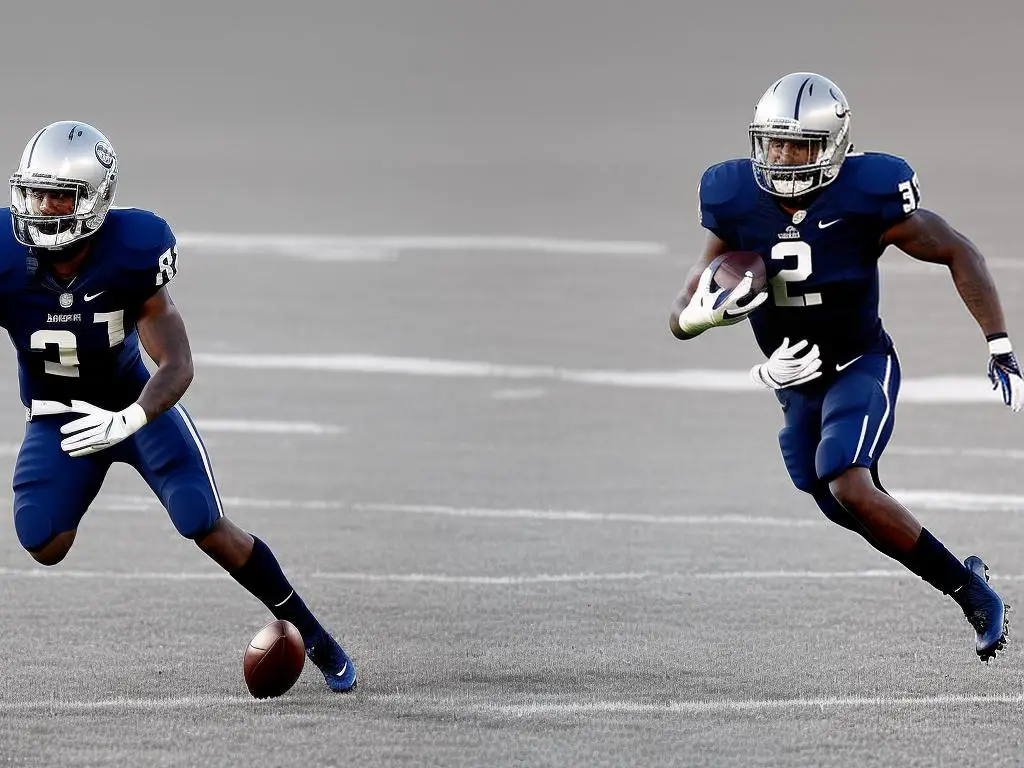
Cultural and Economic Impact
As a sport with deep-rooted cultural significance, especially in America, football’s impact can be felt far beyond the field. Millions of individuals enjoy games as both a leisure activity and a way to bond with friends and family. From local high schools to the prestigious National Football League (NFL), football cultivates a sense of belonging and pride among its supporters. Beyond the game itself, the sport has played an essential role in bridging racial and ethnic divisions, emphasizing unity and team spirit. Fan rituals, tailgating, and attending football games in stadiums are all part of the unique experience and cultural influence of football.
Economically, football is a major driving force behind the sports industry, not just in America but around the world. In the United States, the NFL alone generates approximately $16 billion in annual revenue, mainly through ticket sales, merchandise, sponsorships, and broadcasting rights. Consequently, football contributes significantly to the national economy and creates numerous job opportunities for athletes, coaches, staff members, and companies associated with the sport.
Fan culture is an integral aspect of football’s cultural influence, with various traditions and behaviors passed down through generations of supporters. Fans show unwavering dedication and loyalty to their favorite teams, attending games donning their team’s colors and memorabilia. Known for its intensity and passion, football fan culture extends beyond the stadium and into social and online communities where supporters from all walks of life connect over their shared love for the game. This fanatical devotion to football has also given rise to a thriving market for fantasy football, which allows participants to act as managers, drafting and coaching their own teams of real-life NFL players.
The economic impact of football extends to the host cities and countries of major events, such as the Super Bowl and FIFA World Cup. These events attract an influx of tourists, resulting in increased spending on accommodations, dining, and entertainment within the hosts’ local economies. In some cases, host cities invest in infrastructure projects such as stadium construction, transportation, and city beautification to accommodate the expected swell of visitors for these events. While some critics argue that the economic benefits of such events are overstated, there is no denying that they bring significant short-term boosts to local economies and international recognition to their locations.
Moreover, football provides cities and countries with a platform to showcase their cultural and historical background, as seen during the opening ceremonies of major events. In doing so, the sport allows people to come together through a shared interest, fostering cultural exchange and understanding. This global connection and celebration of diversity are, without a doubt, significant components of football’s wide-ranging cultural impact and economic influence.

Throughout its storied history, football has transcended geographic, cultural, and socioeconomic boundaries to emerge as a universal language that unites people from all corners of the world. As the sport continues to evolve, it creates larger-than-life heroes, fosters fierce rivalries, and illuminates the power of collective teamwork and tenacity. By critically examining its origin, rules, and strategic elements, as well as the cultural and economic impact of football, we acquire a deeper appreciation for the magnetic appeal of this truly global sport. As long as it continues to unite, inspire, and engage millions of fans and athletes, football will remain an enduring symbol of hope, perseverance, and community

